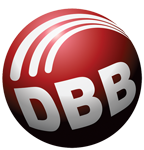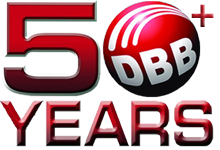
The words copying and scanning often get used interchangeably in office environments. Generally speaking, this isn’t really a big deal. Most people understand what others mean based on the context of what they say. Plus, most people don’t need to be printing, copying, and scanning experts for their job. They just need the right tools in place to get their job done.
With all of that said, it is important for decision makers to understand the important differences between scanning and copying when planning upgrades or additions to their business. Both technologies play unique roles and help with a variety of tasks and workflows. With a strong understanding in place, the right solutions can be implemented and help businesses become more efficient and productive. Plus, with the latest multifunction printers (MFPs) both capabilities can be included for the best experience possible.
WHAT ARE THE DIFFERENCES BETWEEN COPYING AND SCANNING?
Copying and scanning can appear similar but have significant differences. With copying, a duplicate of an existing document or image is created and printed. The copy is purely physical and is meant to be distributed or stored in file storage.
With scanning, the process can appear similar initially. In essence, scanning creates a copy of a document or image. However, the copy is digital and is typically stored on a computer or network storage drive for later use. The scan can be sent by email to multiple people, kept for later printing, and used in a number of other ways.
In both cases, a source document provides a copy. How that copy is used is what determines the difference between the two. Many offices have multifunction printers that can do both copying and scanning which often leads to the interchangeable use of the terms by many.
Scanning is digital and copying is physical. What scenarios would one consider one method over the other? There are pros and cons to each that are important to understand.
COPYING: PROS AND CONS
Copying is probably the most well understood process of the two because it has been around for longer. Before network storage drives, the growth of email, and the presence of a smartphone in everyone’s pocket; using a copier was the preferred method for sharing documents. The process is still widely used today because of how simple it is. The source document goes into the copier and the copy comes out. Hand out the copy, file it away, put it on someone’s desk; the entire process is complete within seconds.
However, the speed and convenience of basic copying does come with some downsides. The most obvious one is cost. Every copy made requires toner and paper. While those cost inputs aren’t very significant per page, the cost can certainly add up as more and more pages are copied. The average business can spend as much as $92 per employee each month on office supplies including print costs. Beyond monetary cost, there is also an environmental impact which more businesses are becoming conscious of as they pursue green initiatives.
Paper copies are also limited in their functionality. Beyond sharing or filing, there isn’t a lot that can be done with a physical copy. Edits must be done in pen on the existing document and there’s really no way to make the process any more efficient with regards to time.
SCANNING: PROS AND CONS
When scanning a document, one of the biggest advantages is the flexibility of how to use that document in the future. It can be instantly filed away digitally, emailed directly to a recipient, and even printed in the future as one would with a copy. Technological advancements in software and hardware for scanners have made them powerful business tools that can do so much more than capture an image.
Many of the top manufacturers now have solutions that can automatically analyze and sort scanned documents based on certain criteria. For example, a scanned document that fits the parameters of a new account document could be filed away in the correct digital folder with appropriate security controls to prevent unauthorized access. This can help save time for users.
Of course, with scanning, the physical copy is not available. It can always be printed later but, in some cases, people simply want a piece of paper to quickly take with them or hand out to others. This is mitigated with most multifunction printers that include scanning and copying capabilities.
BEST OF BOTH WORLDS
Scanning and copying have their pros and cons. Thankfully, there are a wide range of MFPs that offer both the flexibility of a scanner and the convenience of a copier. To learn more about the top multifunction printers on the market and make the most of the cutting-edge features baked right in, contact the scanning, printing, and copying experts at Doing Better Business today.
Topics: Copier Service, #MoreThanCopiers, color copiers, scanning

